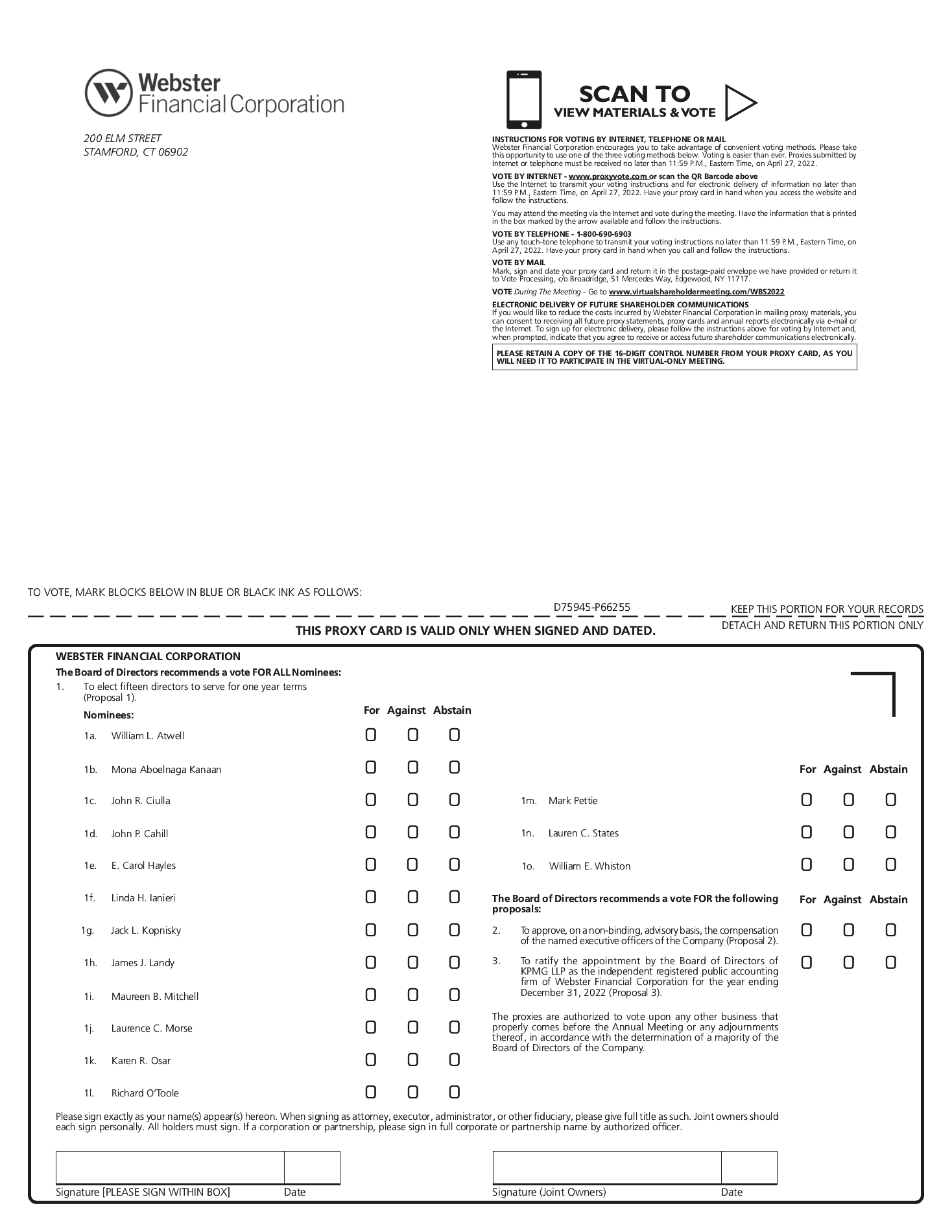Hudson Valley Bank from 1977 to 2015, Mr. Landy has served in various management and
senior leadership positions, including President and Chief Executive Officer of Hudson Valley Holding Corp. from 2001 to 2012 and President and Chief Executive Officer of Hudson Valley Bank, National Association from 2001 to 2012.
Currently, Mr. Landy serves as the Chair of the Board of Directors
of St. Joseph’s Hospital, Yonkers along with serving as a director for several civic, municipal, charitable and ecumenical organizations throughout the New York metropolitan area. Mr. Landy is a member of the Audit and Risk Committees.
Having over forty-four years of commercial banking and extensive
executive management experience, as the former President and Chief Executive Officer of a commercial bank, Mr. Landy brings to the Board a unique perspective and understanding of the financial services industry, client products and operations.
Maureen B. Mitchell is Senior Advisor at The Boston Consulting Group, a position she has held since 2017, where she advises on issues of strategy transformation, product development and digital execution. Previously, Ms. Mitchell was President of Global
Sales and Marketing and a director of GE Asset Management, Inc from 2009 to 2016, and the Global Head of Distribution at Highland Capital Management, LP from 2008 to 2009. Ms. Mitchell’s previous experience includes ten years at Bear Stearns
Asset Management, where she was a Senior Managing Director and Global Head of Institutional Sales and Client Services.
Currently, Ms. Mitchell serves as a member of the Board of Trustees
of Natixis/Loomis Sayles Mutual Funds, a position she has held since 2017, and serves on the Contracts and Governance Committees. Ms. Mitchell was a director of Fieldpoint Private Bank and Trust from 2017 to 2018, a director of Investment Company
Institute (ICI Board of Governors) from 2015 to 2016, and a diretor of GE Asset Management, Inc. from 2009 to 2016, GE Investment Distributors, Inc. from 2014 to 2016, GE Asset Management from 2012 to 2016 and GE Asset Management Funds II PLC
from 2012 to 2014. Ms. Mitchell is a member of the Audit and Technology Committees.
Ms. Mitchell is an experienced corporate board director and C-Suite
executive for global companies with more than thirty years of experience in the financial services sector. She has broad experience in the areas of banking, asset management, insurance and private equity with a strong history of driving growth
and transforming organizations through the lens of strategic vision.
Laurence C. Morse is the Managing Partner of Fairview Capital Partners, Inc., a West Hartford, Connecticut based investment management firm established in 1994 that oversees venture capital funds, some of which invest capital in venture capital
partnerships and similar investment vehicles that provide capital primarily to minority-controlled companies. Mr. Morse is a former director of the Institute of International Education, a member of the Board of Trustees of Harris Associates
Investment Trust (which oversees the Oakmark Family of Mutual Funds), currently Chair of the Board of Trustees of Howard University, and is a former director of Princeton University Investment Company, a former Trustee of Princeton University
and a former director and chairman of the National Association of Investment Companies, a private, not-for-profit trade association that represents 52 private equity and specialty finance investment firms. Mr. Morse is Chair of the Compensation
Committee and a member of the Nominating and Corporate Governance and Executive Committees.
Mr. Morse’s entire career has been spent in the investment
management field, including as the co- founder and Managing Partner of an investment management firm, which provides the Board with extensive knowledge of the capital markets and accounting issues. His experience has made him adept at performing
rigorous risk assessments of managers and management teams, and assessing new technologies, products and services, business strategies, markets and industries.
Karen R. Osar
was Executive Vice President and Chief Financial Officer of Chemtura Corporation (NYSE: CHMT), a specialty chemicals company headquartered in Middlebury, Connecticut from 2004 until her retirement in March 2007. From 1999 to April 2003,
Ms. Osar served as Senior Vice President and Chief Financial Officer of Westvaco Corporation and Mead Westvaco Corporation. She is a former director and audit committee member of Innophos Holdings, Inc. (NASDAQ: IPHS), a publicly held specialty
chemicals company headquartered in Cranbury, New Jersey, a former director and audit committee member of Sappi Limited (JSE: SAP), a publicly held company and one of the largest global producers of coated paper and chemical cellulose,
headquartered in Johannesburg, South Africa, and from 1999 through 2006 she served as a director and audit and finance committee chair of Allergan, Inc., a publicly held multi-specialty health care company focused on developing and
commercializing pharmaceuticals. Ms. Osar is a member of the Compensation and Risk Committees.



 Tweet
Tweet Share
Share






